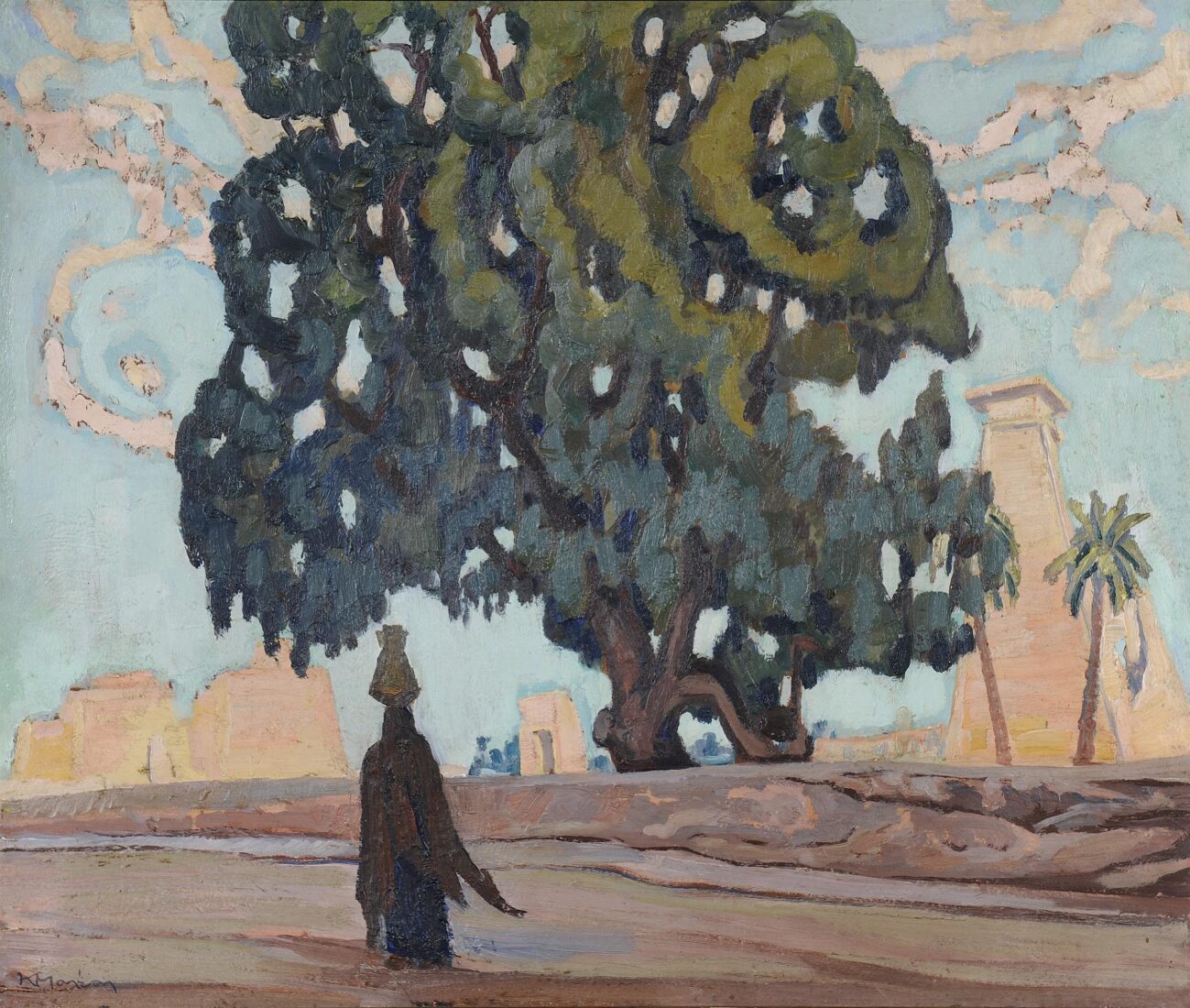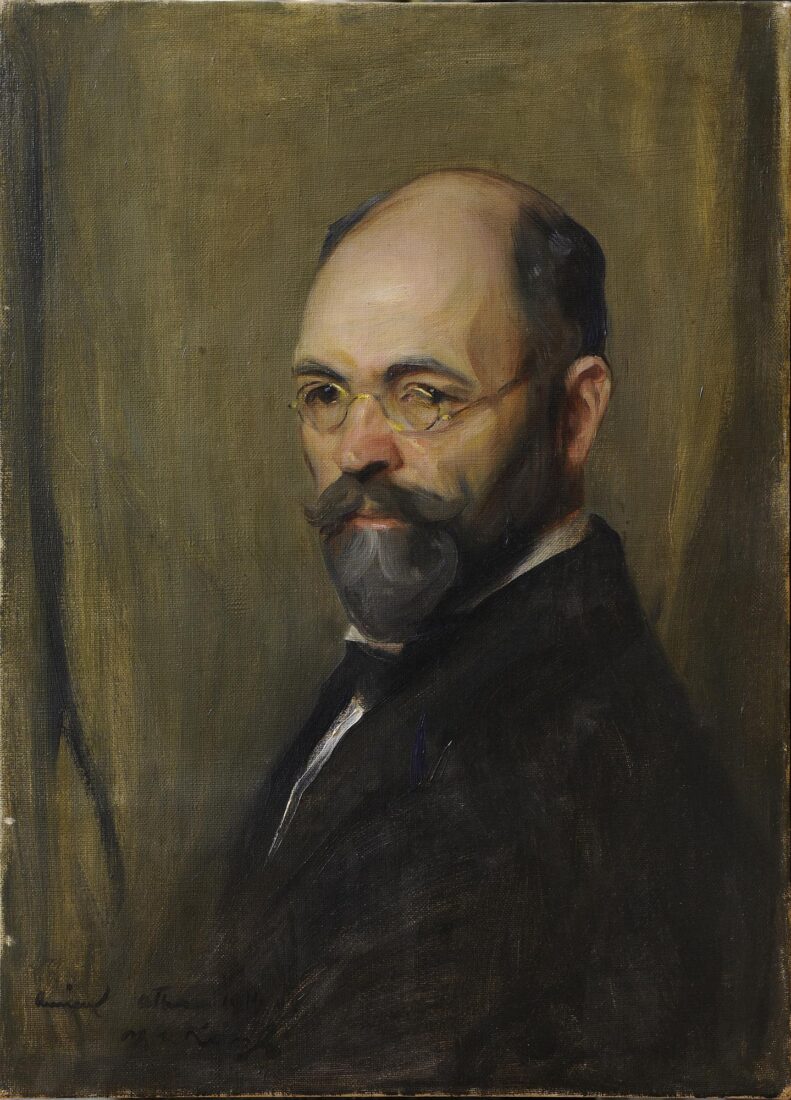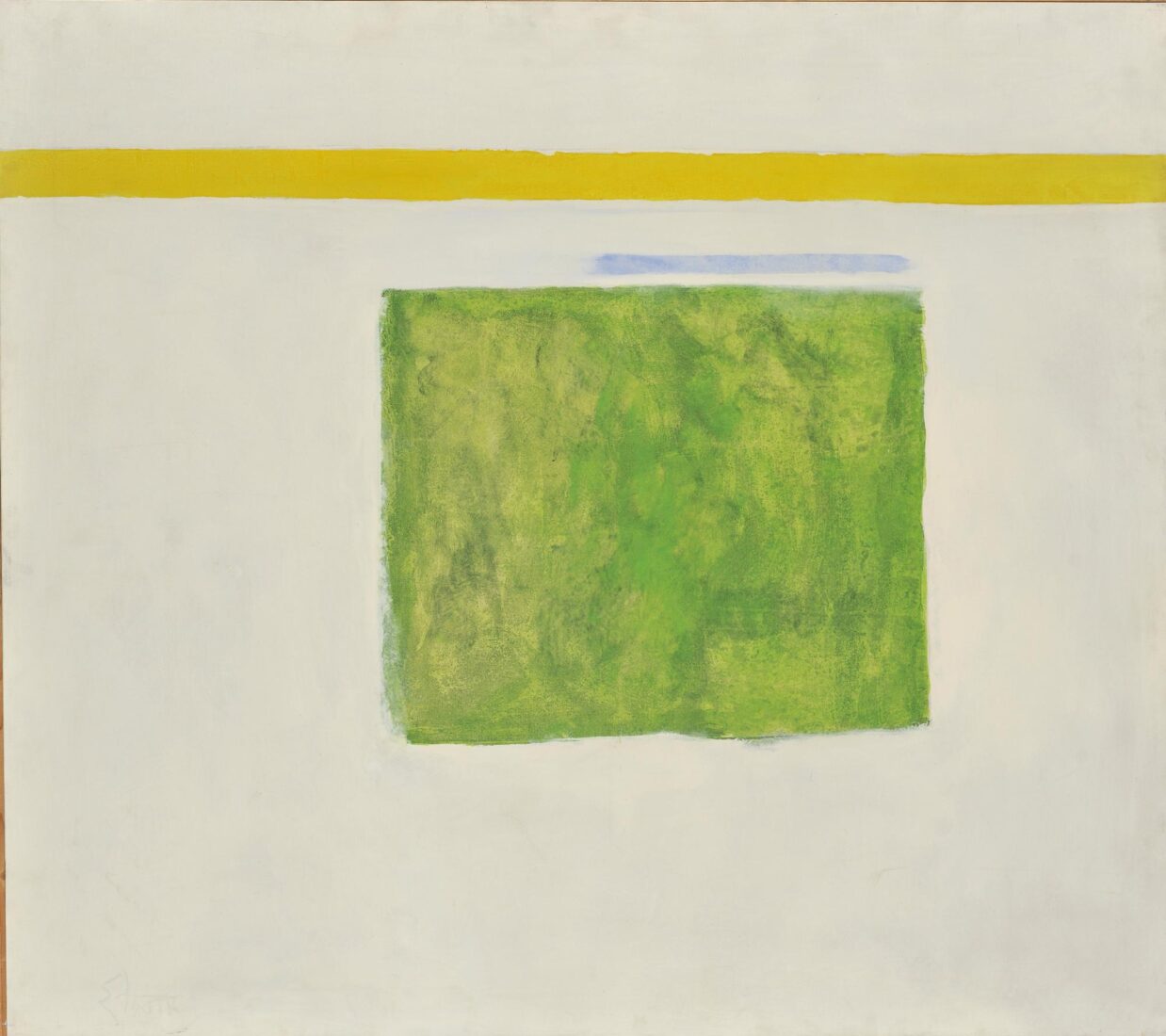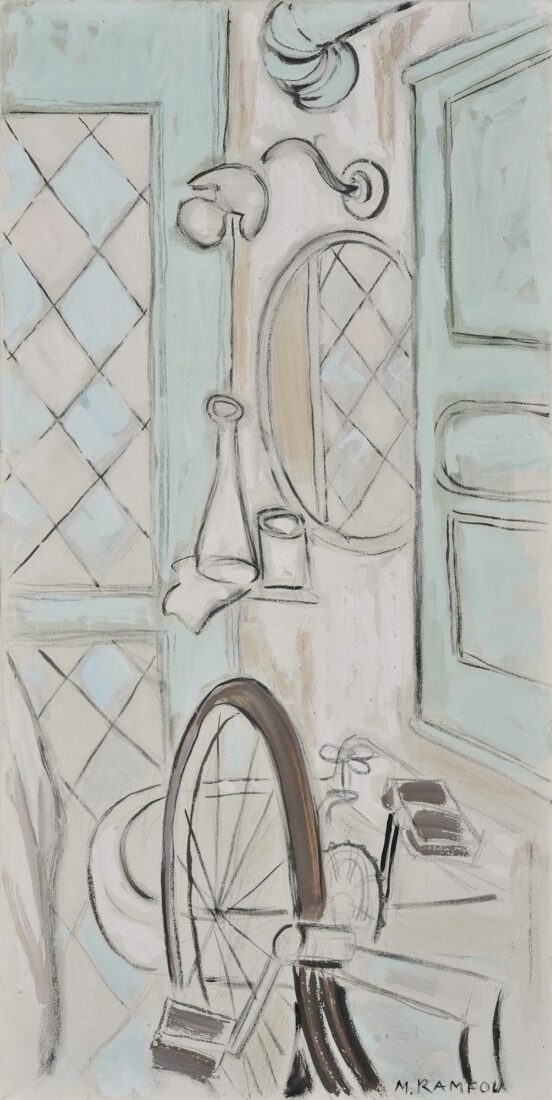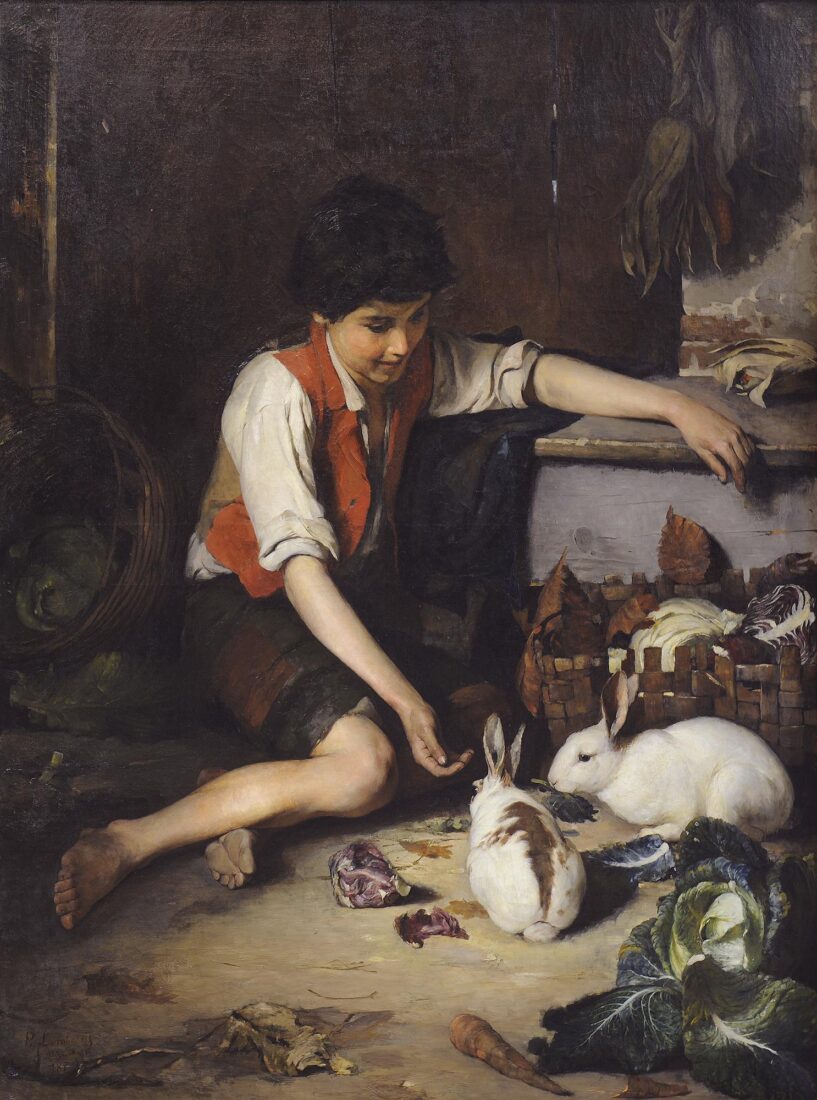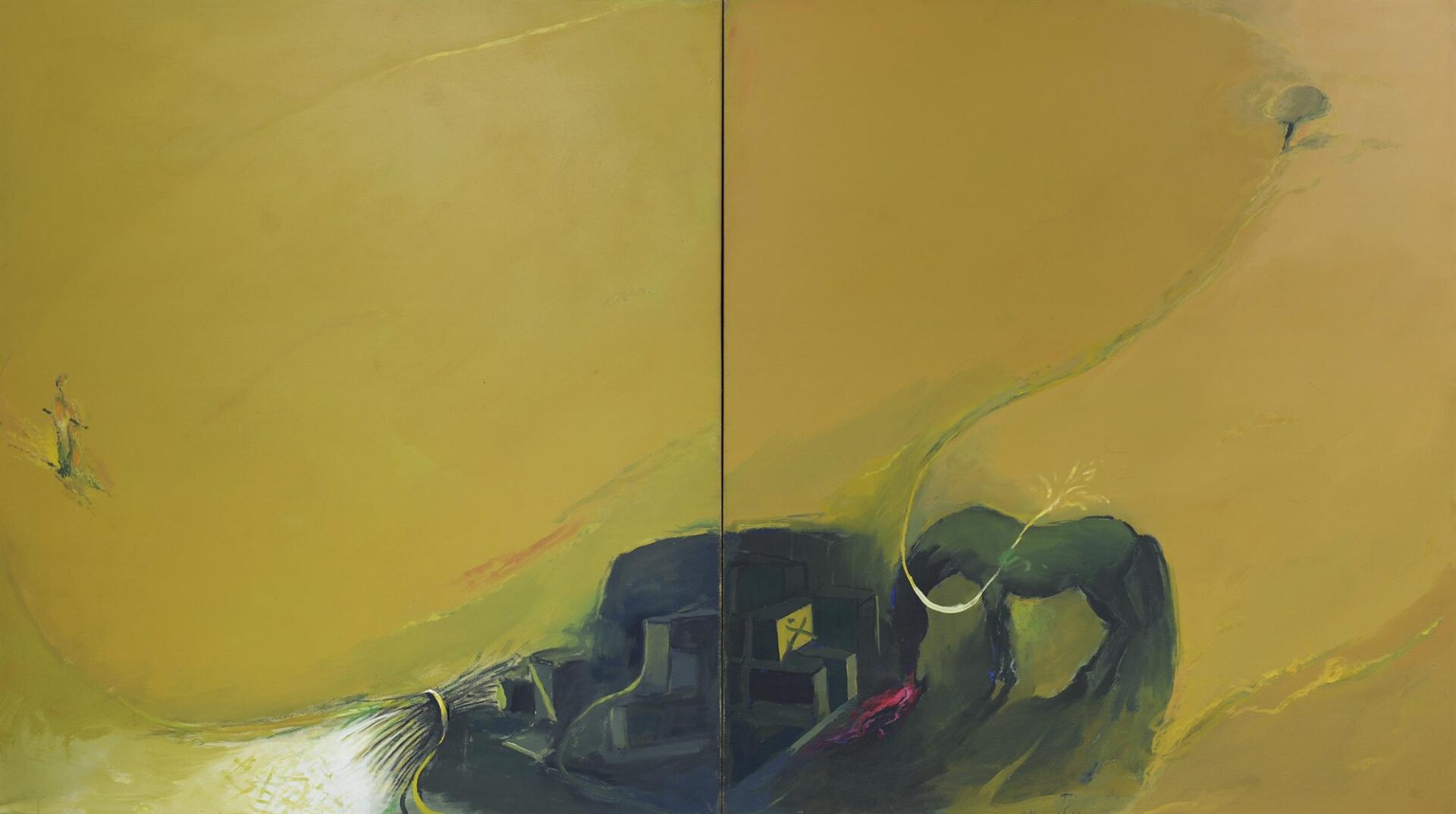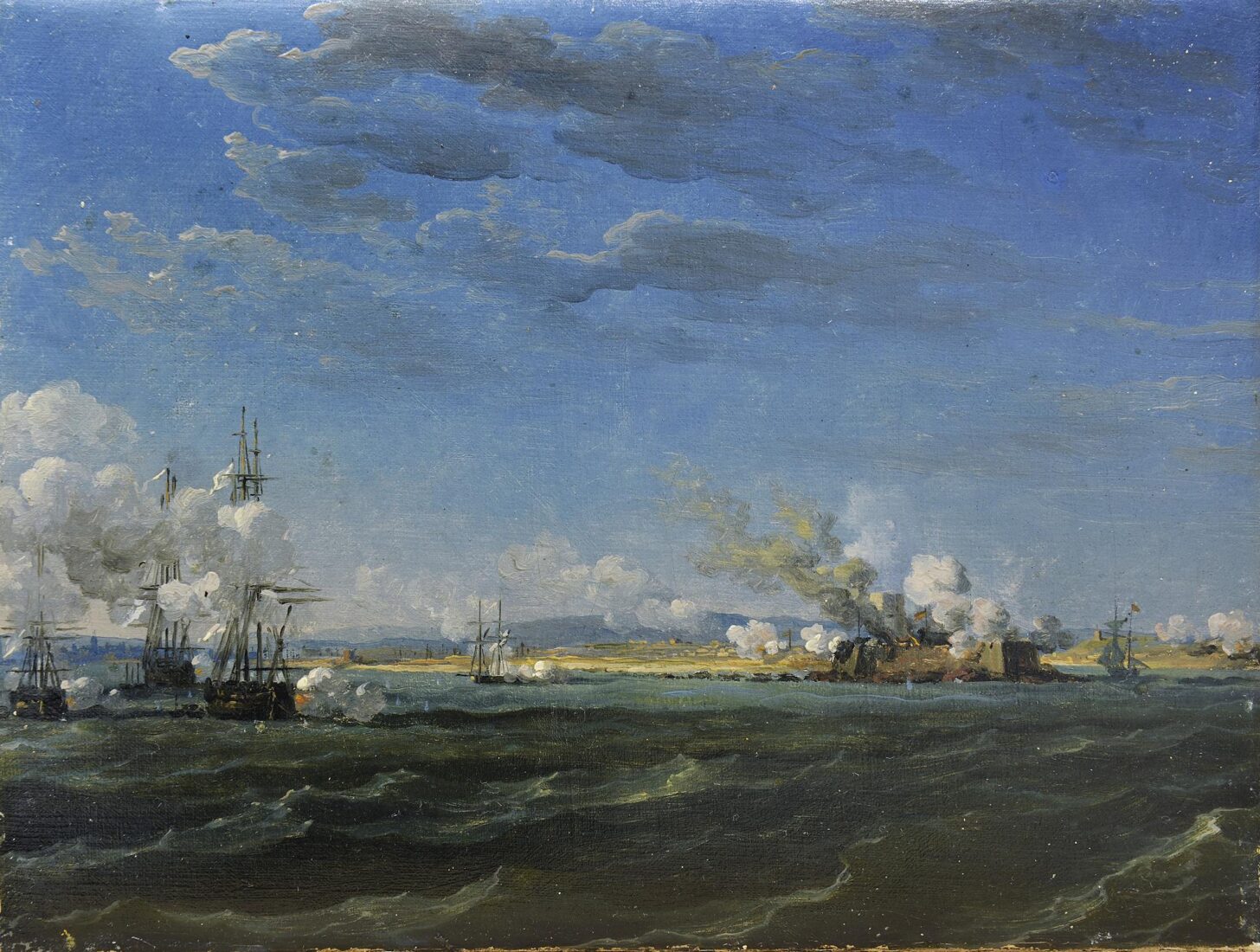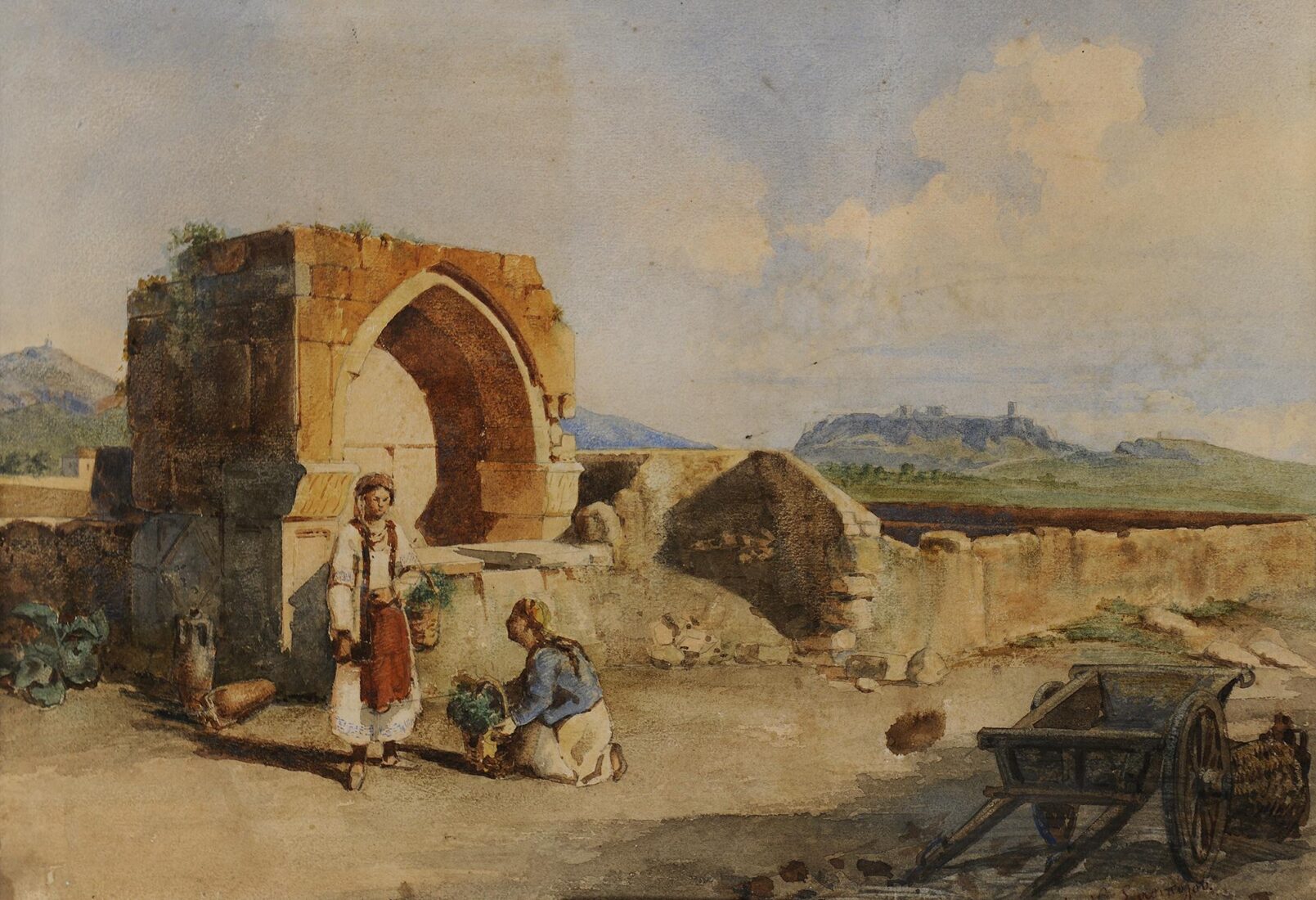

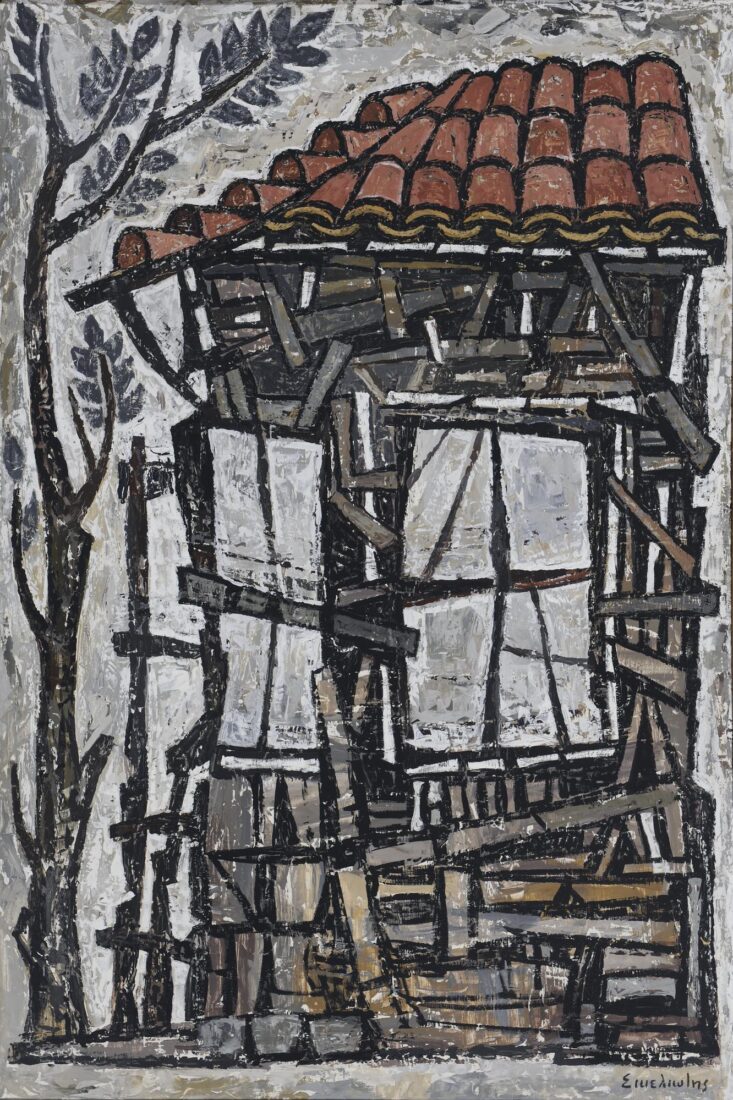
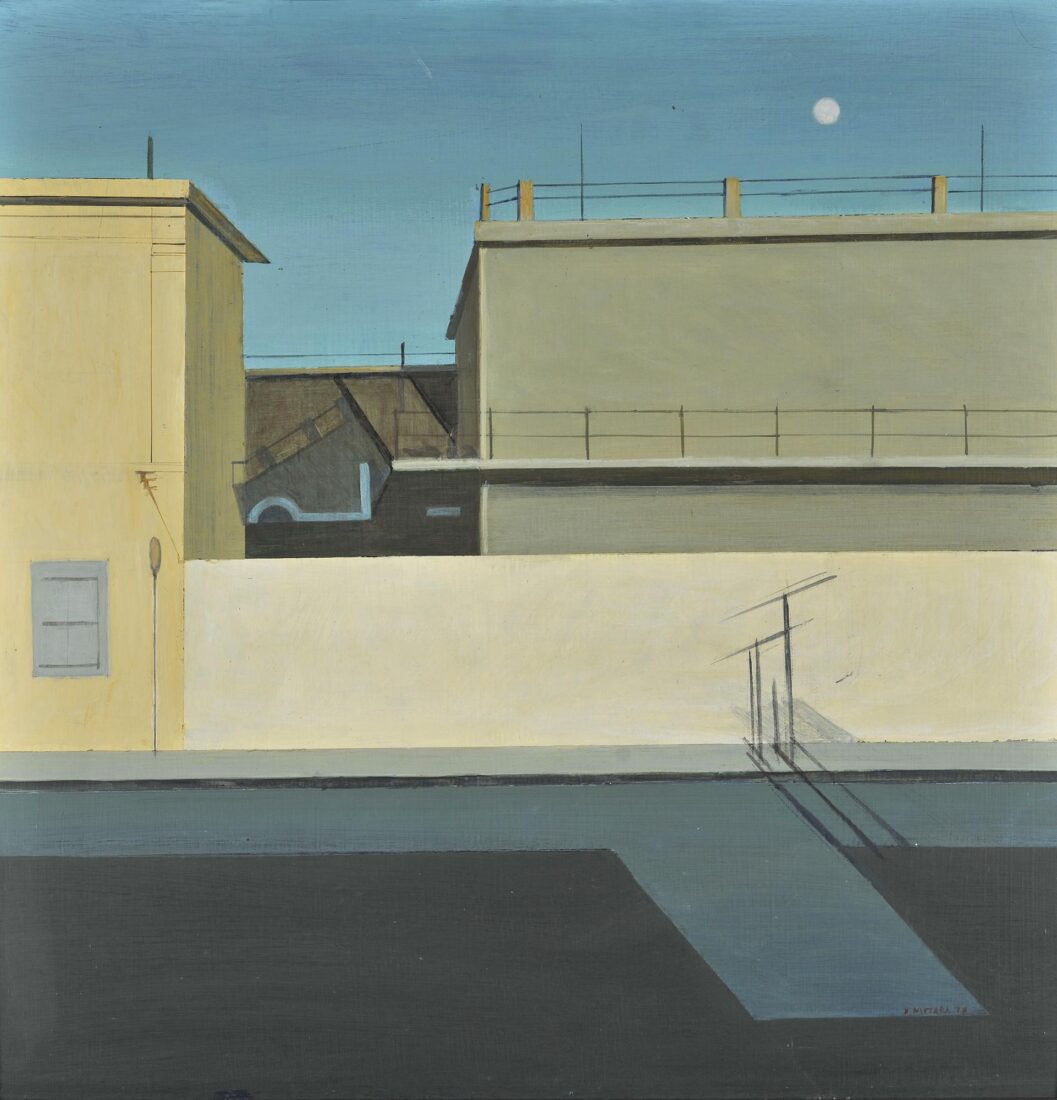
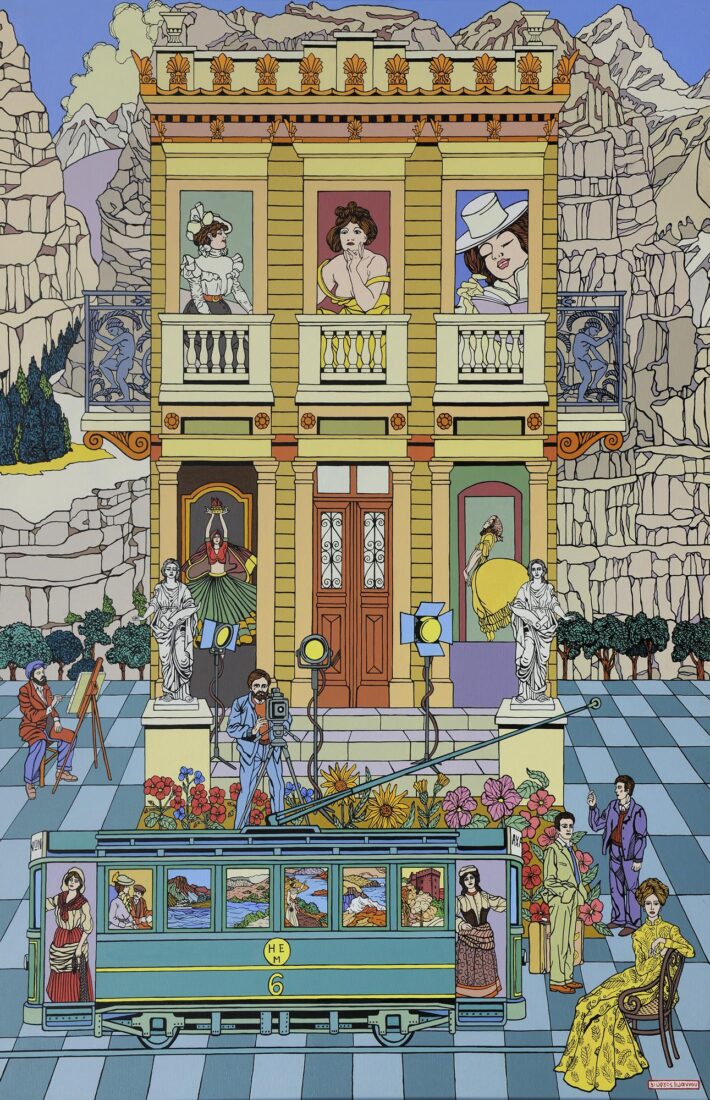
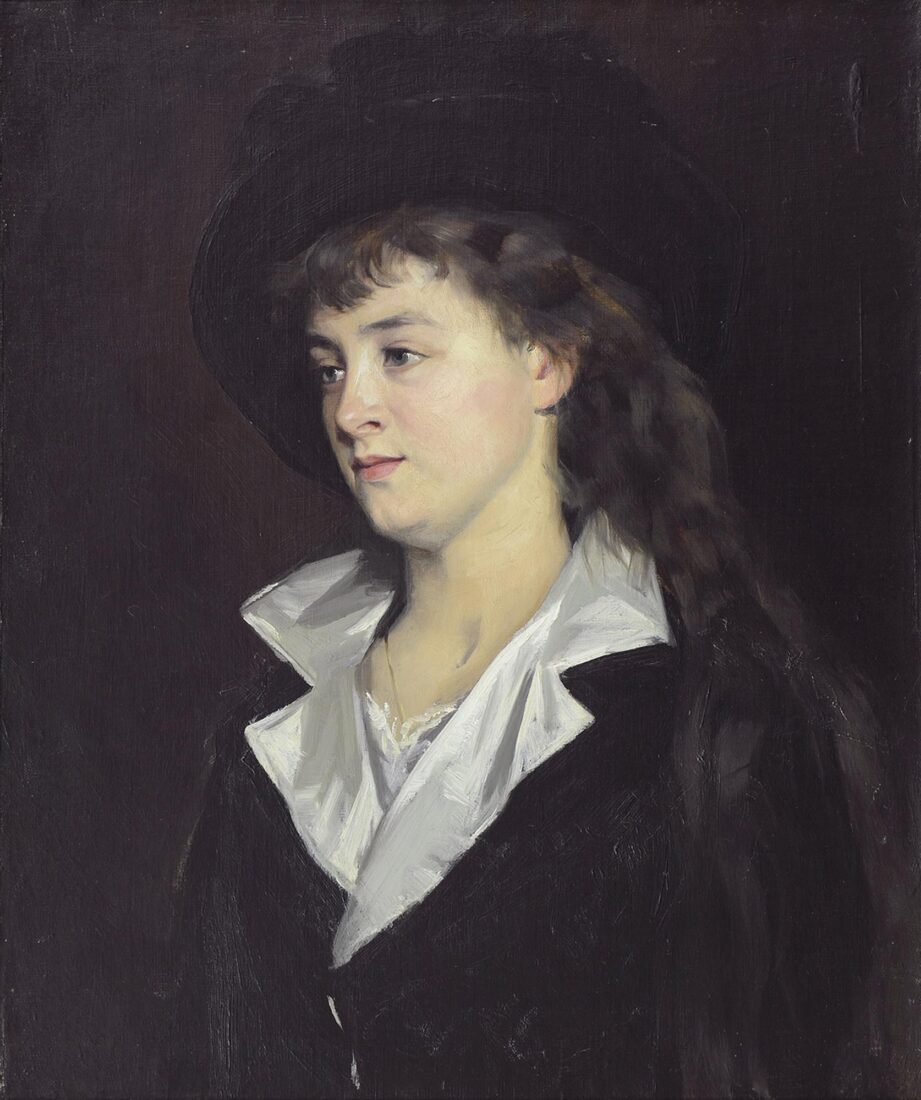
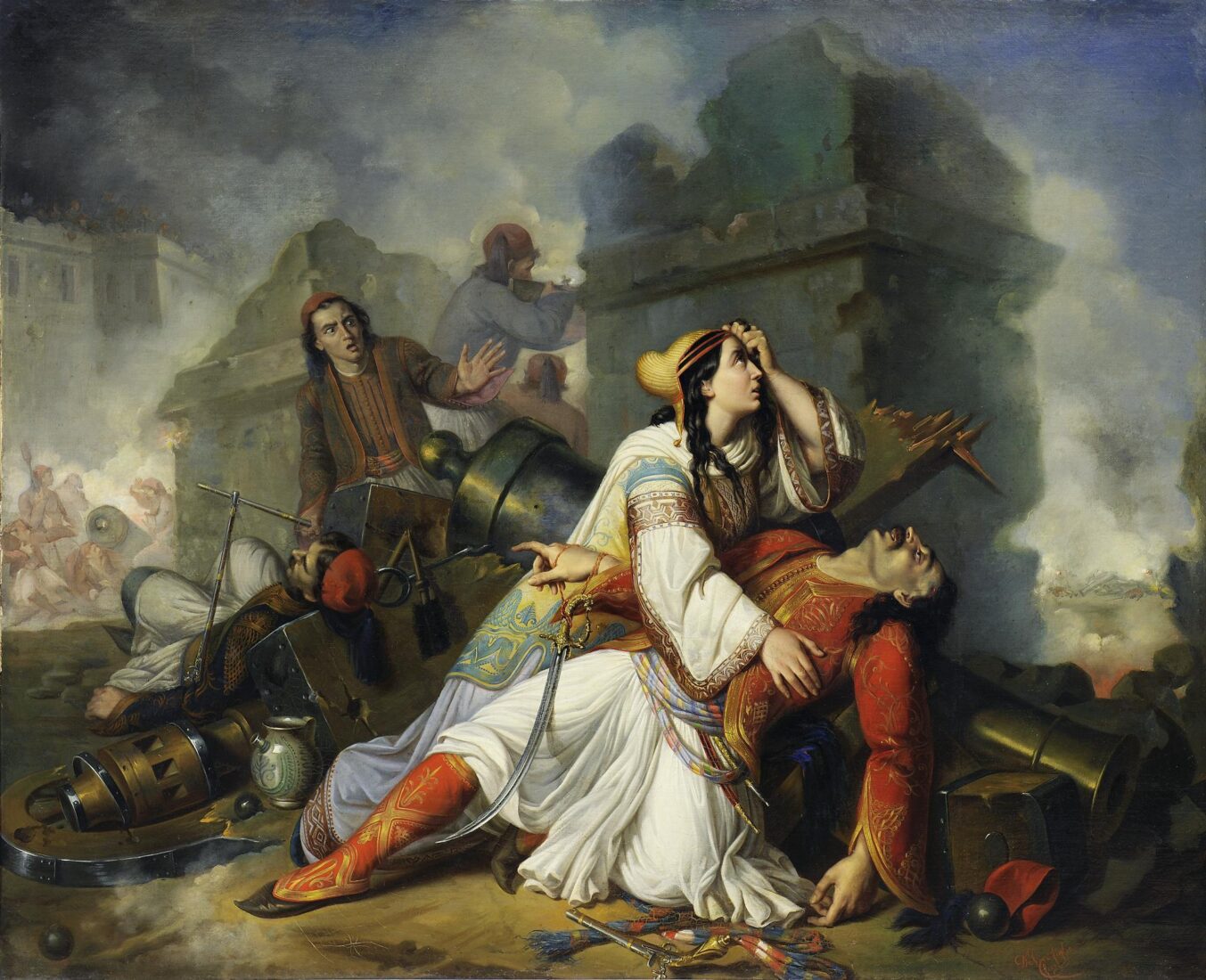
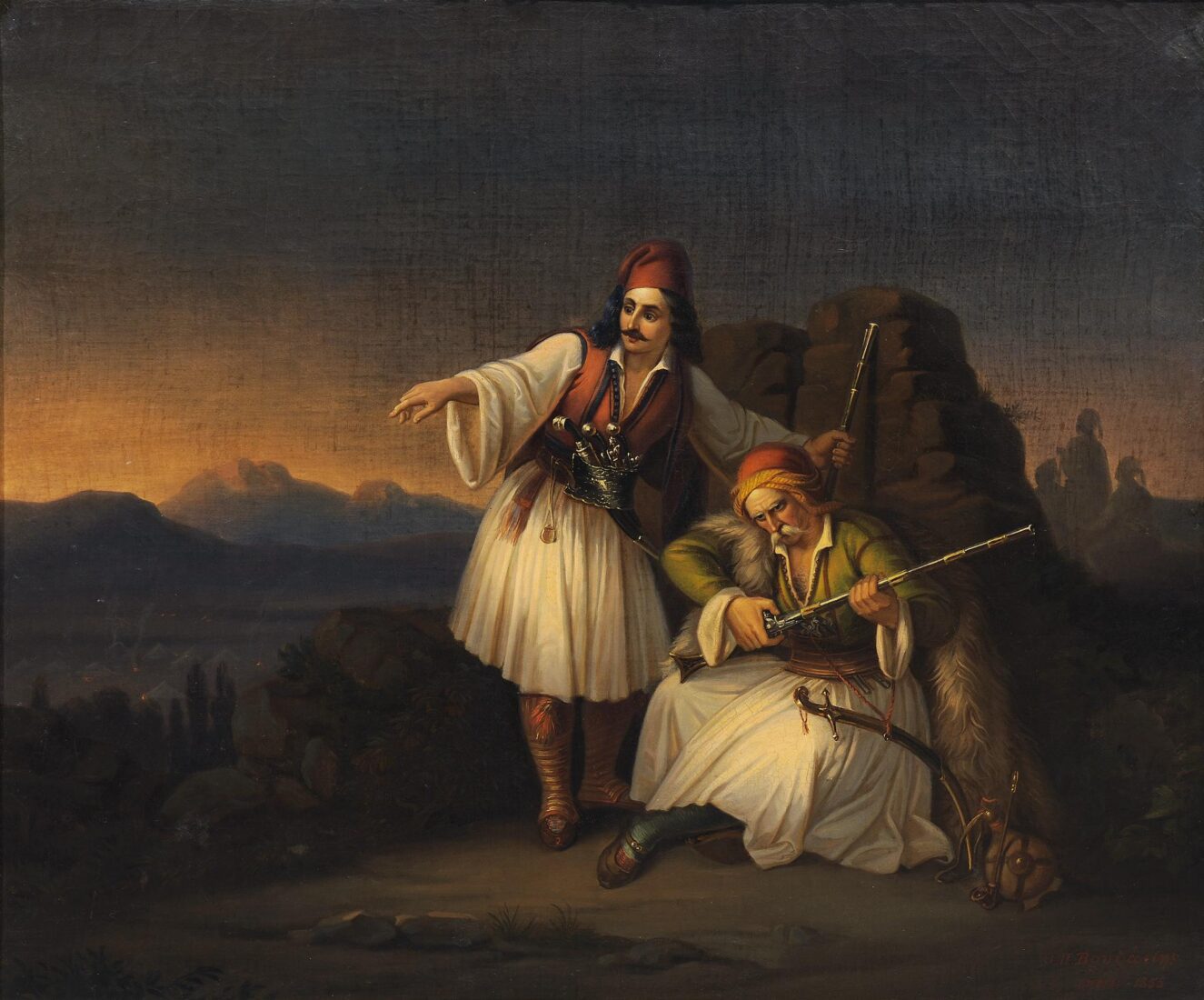
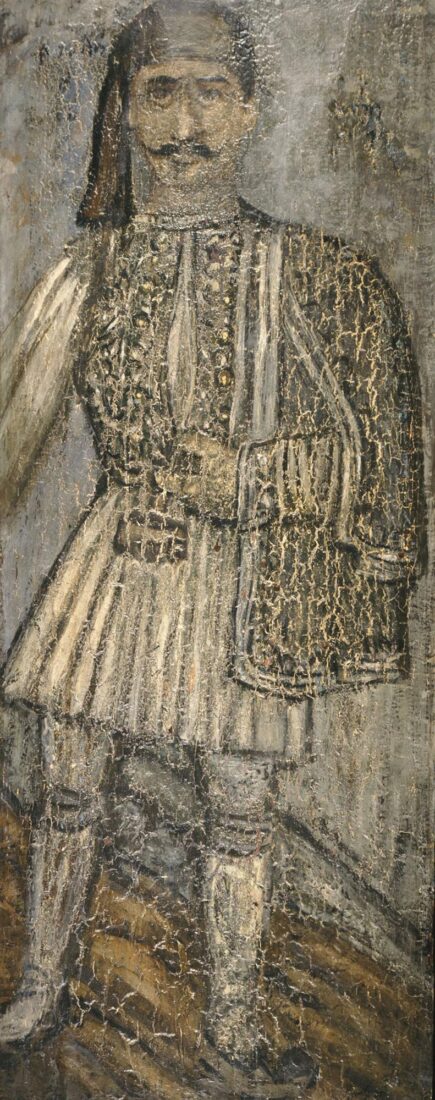
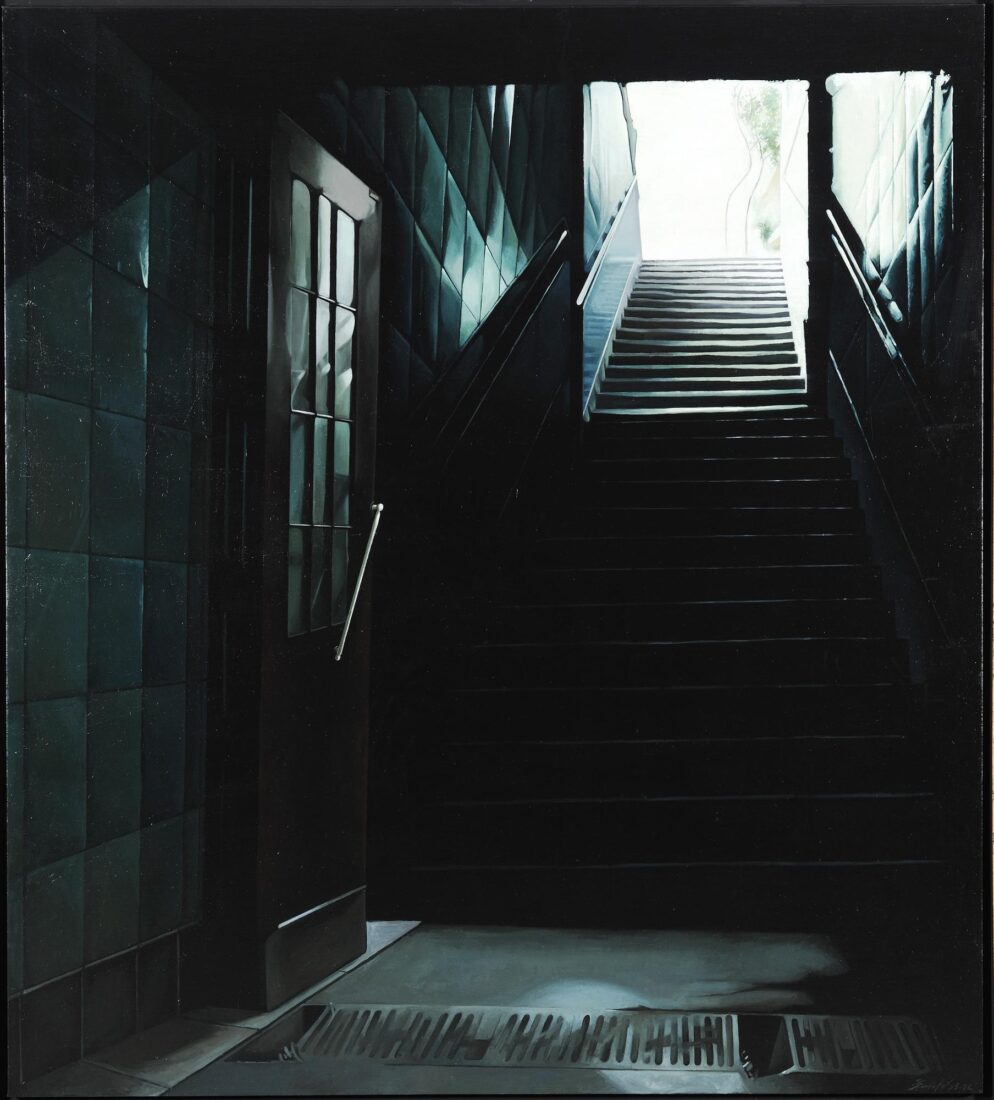
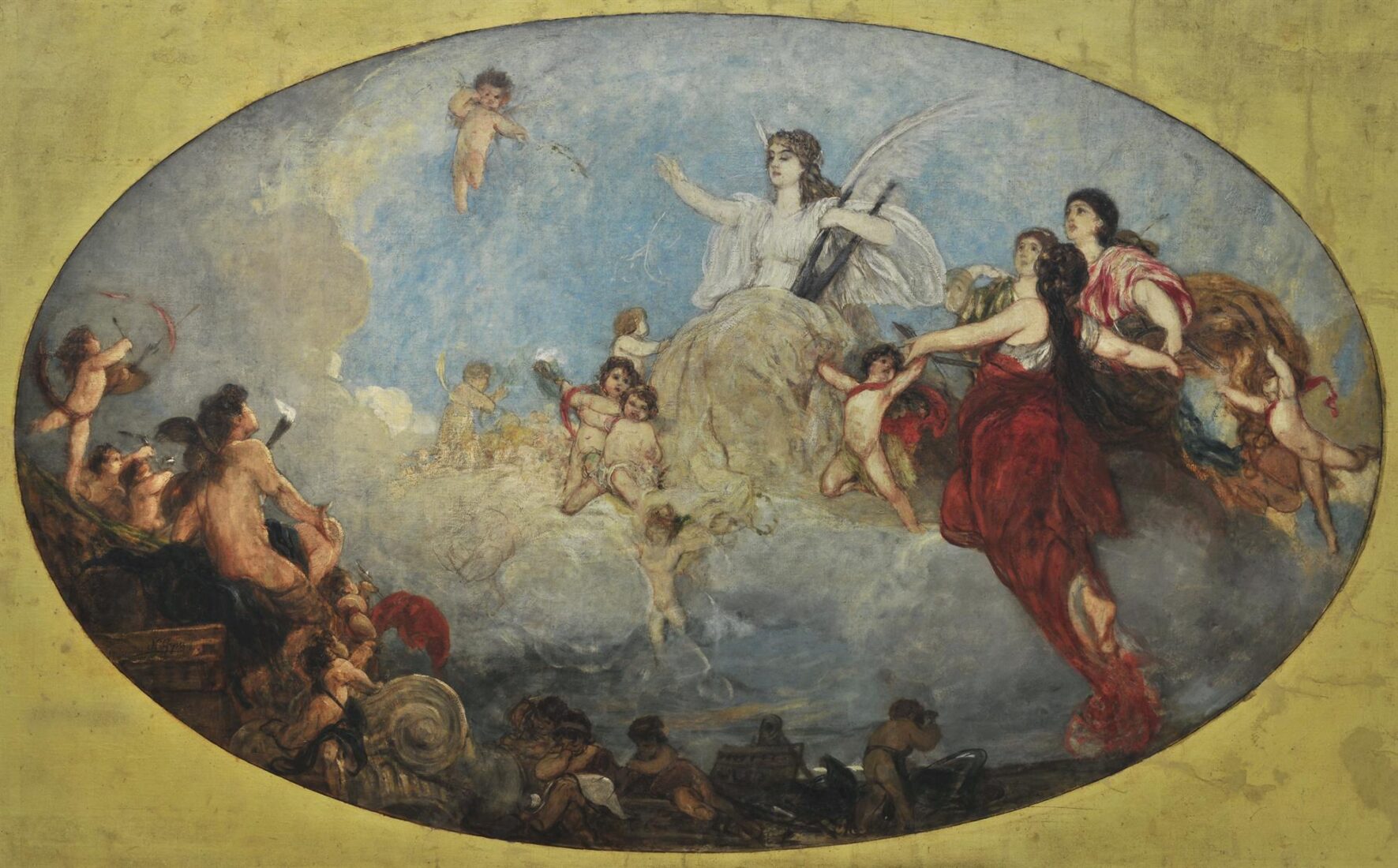
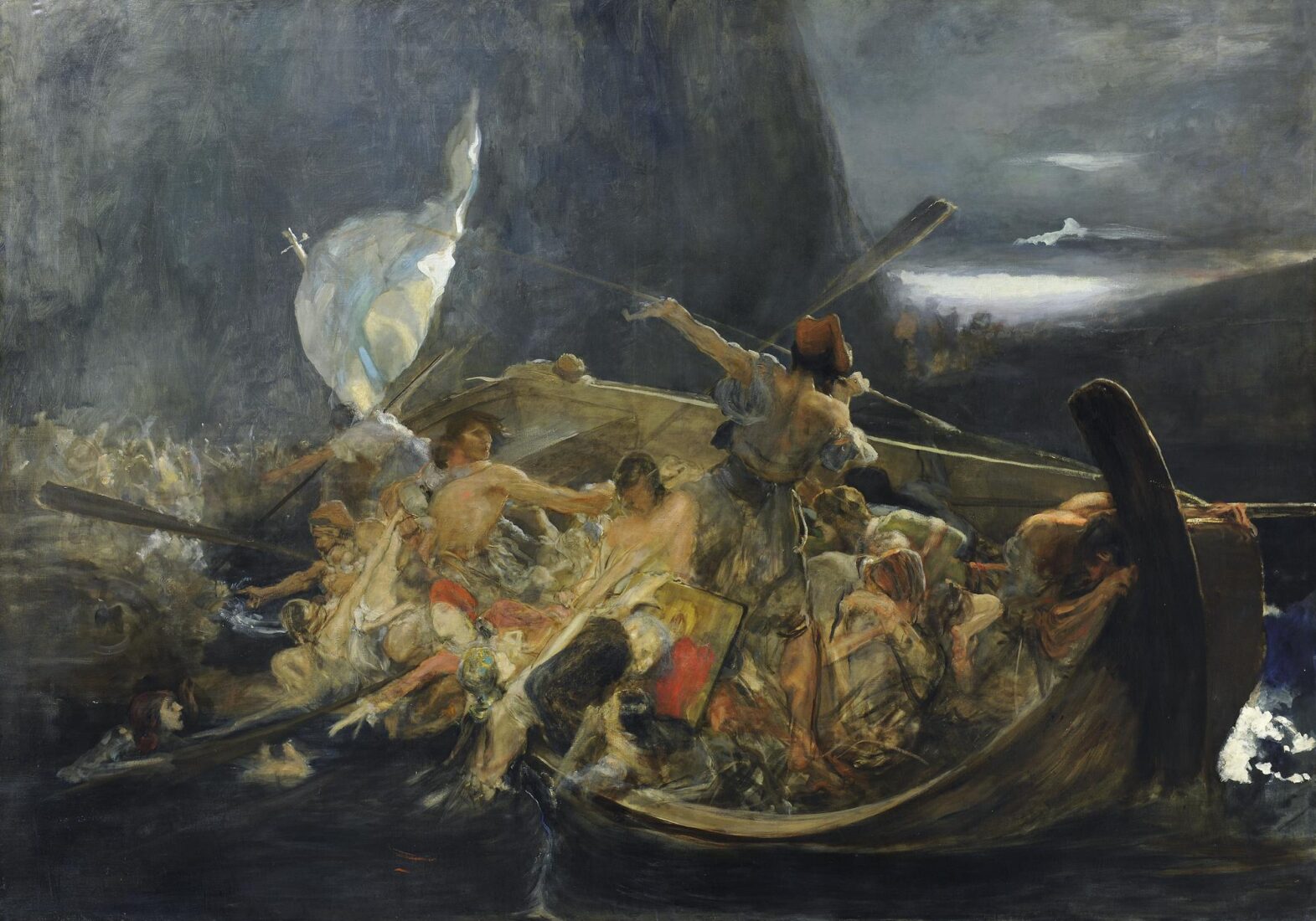
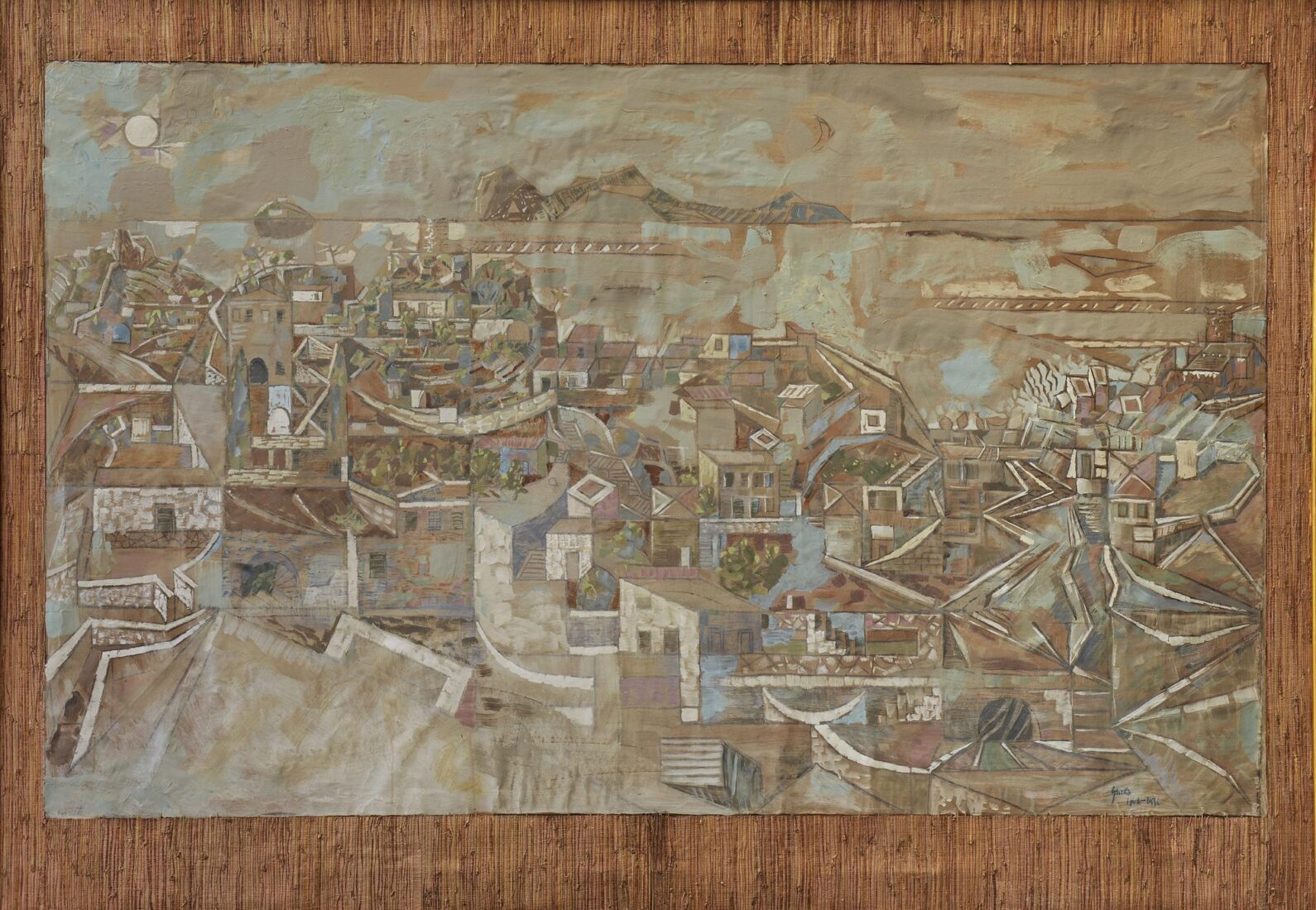
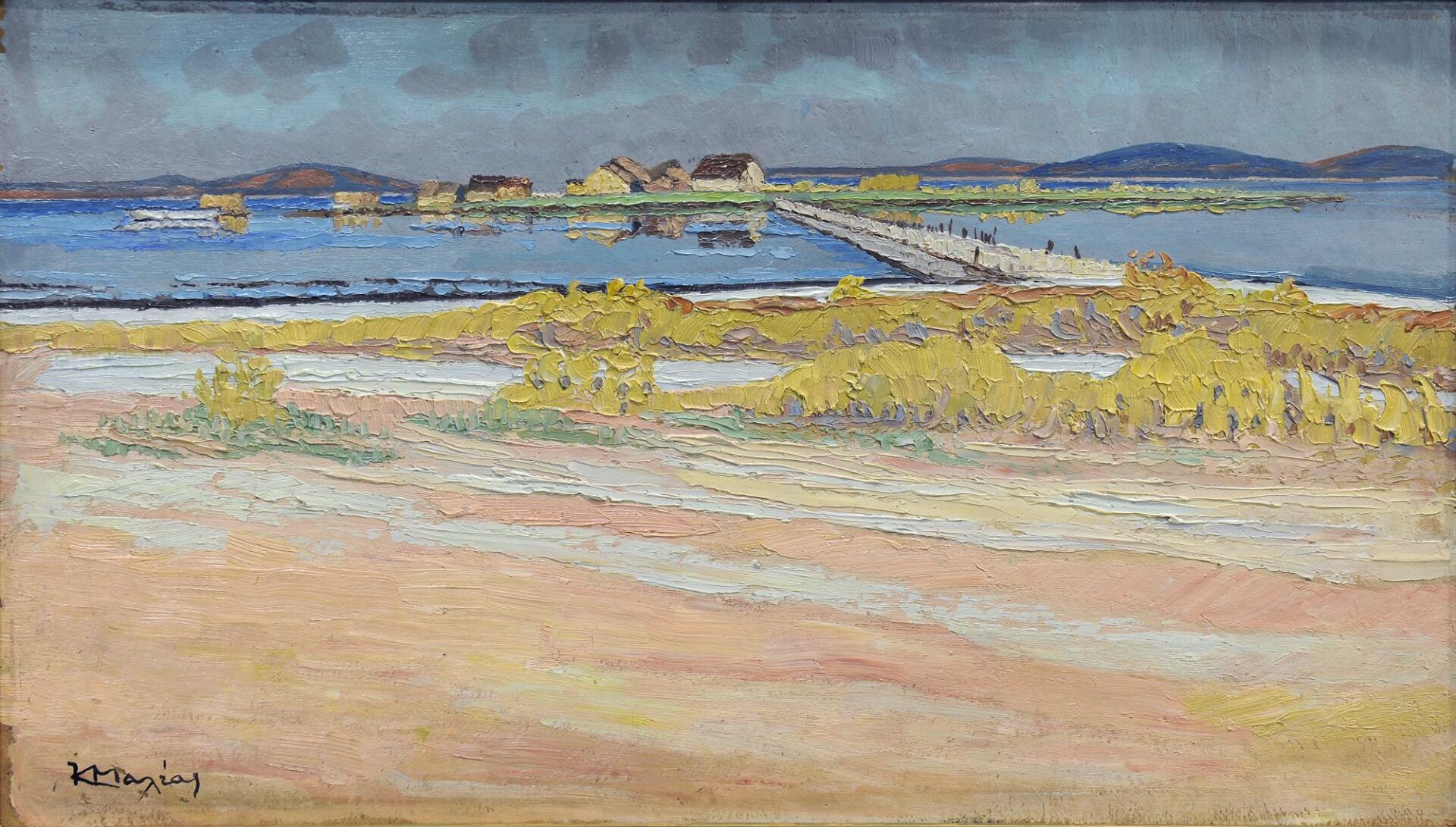
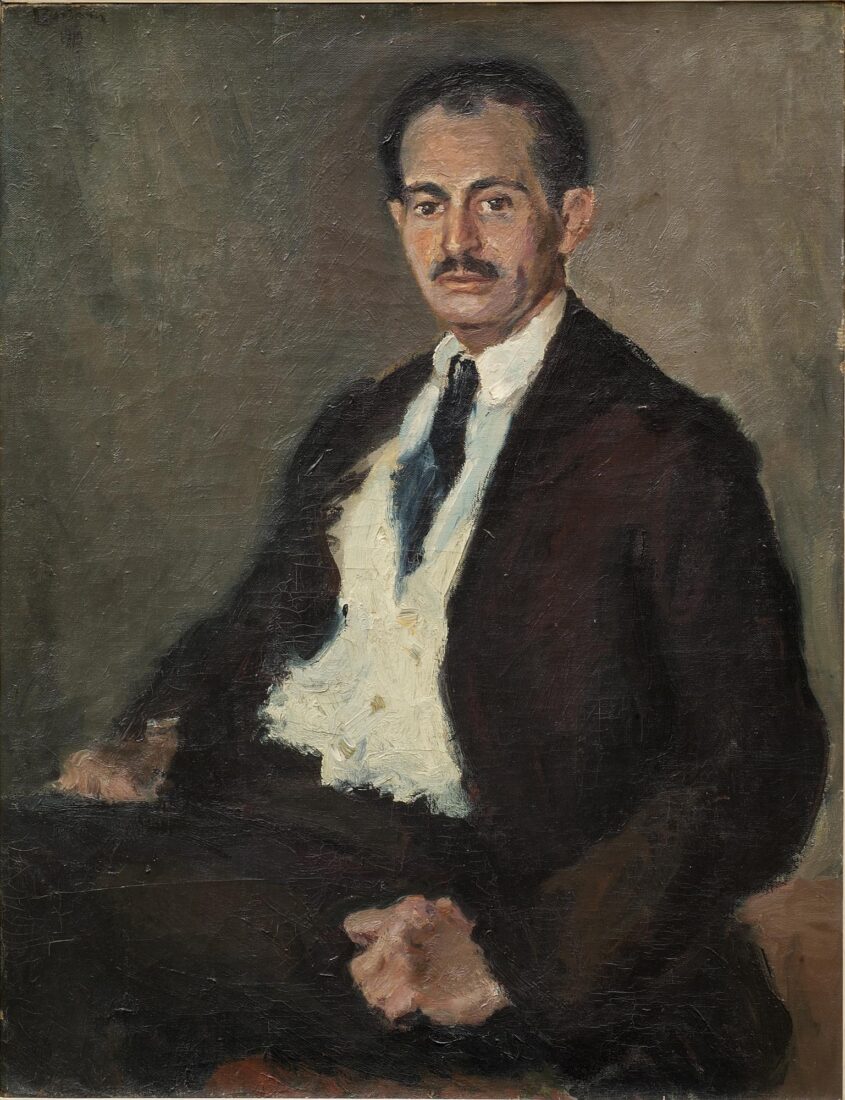
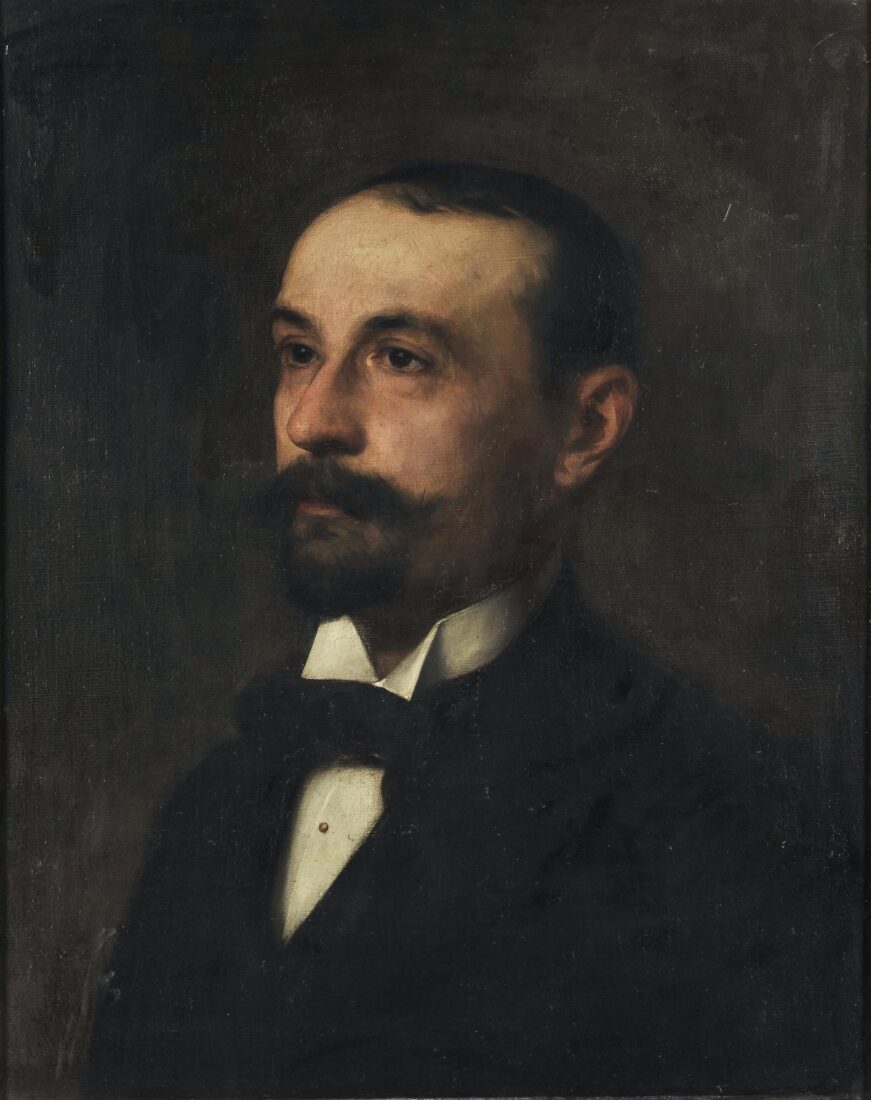
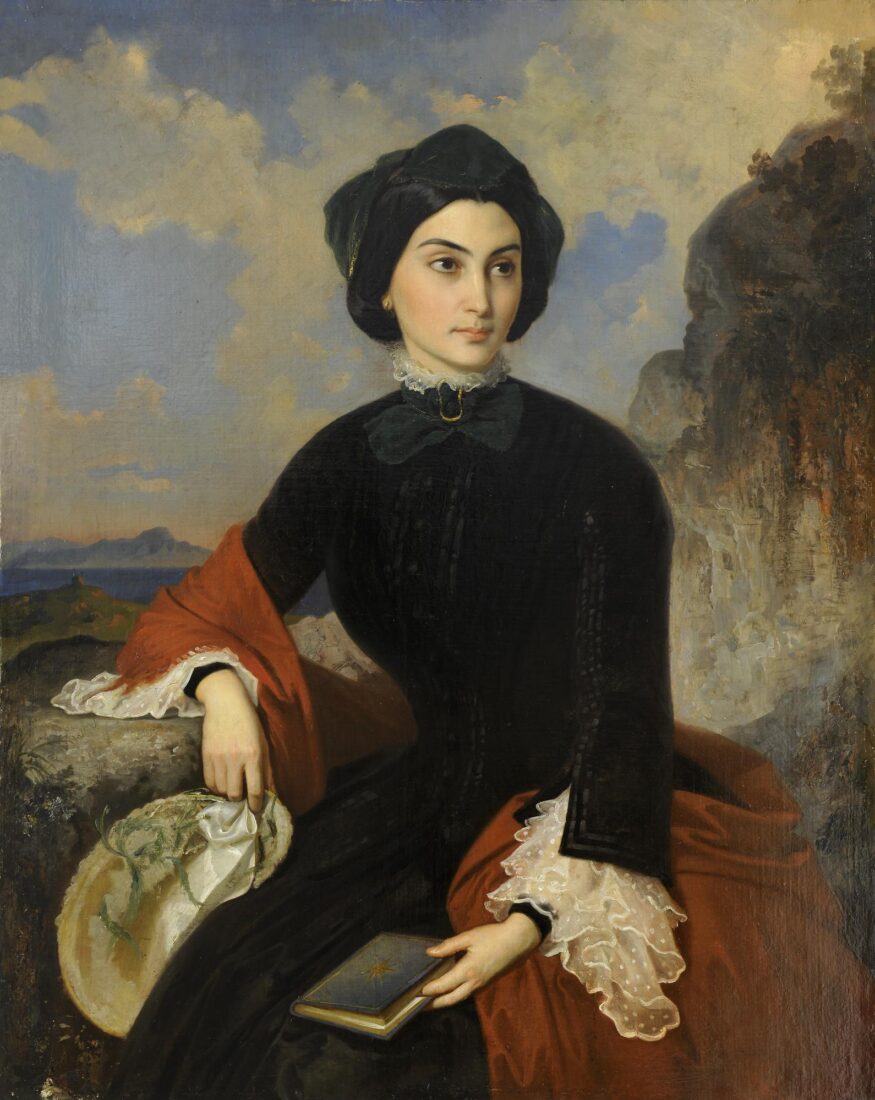
The Bavarian artist Ludwig Thiersch was one of the first professors at the School of Arts. His model here is a woman of great personality, Kleoniki Gennadiou, one of the first Greek women painters and sculptors. She is elegantly dressed, holding a book in her left hand, probably a book of poetry, a detail suggesting that she was an educated, scholarly person.
Now for the first time, the figure is placed outdoors: the rock on the right, the sea, an island in the background, the blue sky with orange clouds, all suggest Greece. With her romantic beauty and her dreamy eyes, Kleoniki Gennadiou is a representative example of how a foreign artist envisioned the ideal Greek beauty.
